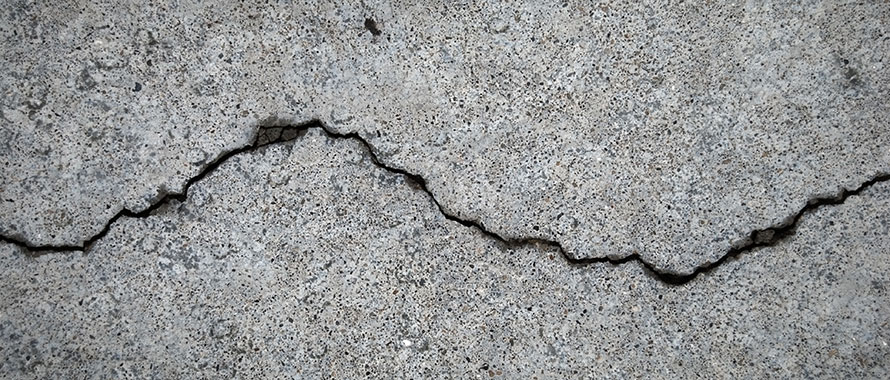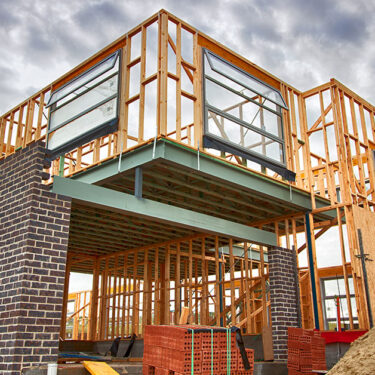Cleanup and investigation efforts are underway at the site of the Forbes Avenue Bridge in Pittsburgh, Pennsylvania, after the bridge collapsed on Jan. 28. A city bus and several other vehicles were on the bridge when it came crashing down, injuring 10 individuals in a terrifying ordeal that left motorists fearing for their lives.
The 447-foot bridge, which was built in 1970 and had last been inspected in September, collapsed just hours before President Joe Biden was expected to speak in the city about the recently-passed $1.2 trillion bipartisan infrastructure bill. Biden visited the collapse site in advance of his planned remarks and promised to rebuild the bridge and others in poor condition.
“This is not the only bridge that is in need of repair,” said Nicholas Freeman, Associate Managing Director, Broker, Casualty, Burns & Wilcox Brokerage, Dallas, Texas. “It is something we all have to deal with, no matter if we live in a big city or a small town. With the infrastructure crumbling or in need of repair in a number of our states and cities, this just reemphasizes that point. It is a reason to be concerned.”

With the infrastructure crumbling or in need of repair in a number of our states and cities, this bridge collapse just reemphasizes that point. It is a reason to be concerned.
Officials are investigating the bridge’s history and what may have contributed to its collapse, which could determine whether any private companies will face liability for the damages. Depending on the circumstances, this could be covered under a contractor’s Commercial General Liability (CGL) Insurance, Excess Liability Insurance, or Architects and Engineers Professional Liability Insurance.
“From a liability perspective, I first thought about all the structural and geotechnical engineers, inspectors and subcontractors that have provided service to the bridge project over its life,” said Tameka Livatino, Underwriting Director, Architects & Engineers, Burns & Wilcox, Chicago, Illinois. “Finger-pointing, years of litigation, and shared liability is a likely result.”
Infrastructure investments prompt growing need for insurance
Signed by Biden on Nov. 15, the U.S. infrastructure law includes $550 billion in new investments over five years, including $110 billion for roads, bridges and other infrastructure projects, and $40 billion toward bridge repair and updates, according to CNN.
Concerns over aging infrastructure have also been raised in Canada, including a 2019 report that found almost 40% of the country’s roads and bridges were in fair, poor, or very poor condition, ConstructConnect reported. On Jan. 6, the government of Ontario, Canada, announced $22 million in funding for infrastructure projects in Southwestern Ontario, including $10 million for bridge and road repairs in Chatham-Kent, the Toronto Star reported.
“Many bridges were built 40, 50 or even 100 years ago, and there may have been some Band-Aids placed on them in that time instead of the needed repairs they should have had because of the cost,” Freeman explained. “When you are just going about your day running errands or on your way to school or work, you may not realize how many bridges and overpasses you travel on. You assume everything is fine, but it turns out that might not necessarily be the case.”
Small businesses specializing in construction, energy and telecommunications could benefit from the U.S. infrastructure investments, Inc. reported in November, although some experts have said a lack of skilled workers could make it difficult to keep up with the increased demand, according to the New York Times. Many in the construction industry are anticipating the coming projects and planning accordingly, Freeman said.
“The contractors and the insurance companies who specialize in this seem to be pretty excited about it. They could have access to projects that could keep them busy for the next 10 or 20 years,” Freeman said. “The companies doing this work are expecting an uptick in the amount of infrastructure work because of this bill, which means that they could need more insurance.”
Companies participating in new infrastructure work will need to ensure they have adequate CGL Insurance, which can cover construction defects and third-party bodily injury and property damage, he said. Design professionals should carry Architects and Engineers Professional Liability Insurance, which can cover design flaws and damages resulting from errors in professional services, Livatino said.
“It can cover damages that occurred due to the error or omission of the professional,” she explained, noting that this could include third-party bodily injury and property damage expenses if they are “directly” linked to the error. “With these new projects, companies should be very careful and do more due diligence when hiring teams. Specialized insurance policies and coverages will be required, and that is going to increase the need for all involved in the project to carry sufficient insurance. They are going to be seeking it out.”
Construction flaws, contractor errors possible at all stages of project
From the early planning stages of road or bridge work to the inspections that may continue for years after the job’s completion, infrastructure work is fraught with significant risk — and when problems occur, the damages can be catastrophic. In December, a settlement was reached in a lawsuit filed by the family of a man who was killed when a bridge at Florida International University collapsed on his vehicle in 2018. Though the settlement was confidential, previous claims for the accident settled for a total of $103 million, NBC 6 South Florida reported. Six individuals were killed in the collapse, which lawyers reportedly alleged could have been linked to design errors by the original engineers.
In Ontario, Canada, in April of 2021, a 46-year-old Toronto man was killed when an overhead highway sign fell onto Queen Elizabeth Way and struck the man’s car, Newsweek reported.
Although roads and bridges generally belong to municipalities, which are responsible for their upkeep, anyone involved in the project at any point could be sued in the future, Freeman said.
“It could be a situation of when was it last inspected and by whom? What contractors have been out there in the past several years? If there were private contractors inspecting, repairing, or servicing a bridge within the last five to 10 years, for example, they could get brought into a lawsuit,” he said, noting that in other types of accidents, questions could arise over who was responsible for a project’s traffic control and where barrels or signs were placed to keep the public safe. “There could be an allegation of negligence for what they did or did not do that led to that accident.”
In accidents that involve worker injuries, there may be overlap with Workers’ Compensation Insurance and CGL Insurance. “If one of the employees gets hurt because someone was not paying attention, there are certain mechanisms in place where that claim could be filed under Workers’ Compensation Insurance or CGL Insurance, depending on the details,” Freeman explained.
The potential severity of infrastructure project incidents is part of why many insurance carriers do not offer coverage for this type of high-hazard work, Freeman and Livatino said. “They may shy away from bridge work or price these policies higher,” Livatino said.
One of the most important covered expenses for both CGL Insurance and Architects and Engineers Professional Liability Insurance is legal defense. This can include paying for investigators, inspectors, and attorney fees. “From a financial standpoint, even if you were not at fault, the cost of litigation could be significant,” she said. “It is one of those costs that cannot be avoided.”
When multiple parties are brought into a lawsuit, however, “it is very difficult to prove exactly where the flaw is,” Livatino added. In these cases, expenses and damages may be shared between multiple entities. “Proving liability can be difficult, especially when a project requires maintenance throughout its life,” she said.
Consider policy limits, contractual requirements
With infrastructure investments on the horizon in both the U.S. and Canada, companies hoping to get involved in these projects could benefit from reviewing their insurance options. When bidding opens for a project, they may find they need to increase their limits or expand their coverage to qualify for consideration. Jobs for the U.S. Department of Transportation, for example, often require “certain coverage extensions or the absence of certain exclusions,” Freeman said.
“Before you sign on the dotted line to bid on a job or possibly win one, are the limits and coverage you have adequate for that job, or are you going to be chasing those limits down after the fact, which will cost more money?” he said. “First and foremost is whether your current coverage is adequate for the job that you are bidding on.”
Many companies will also need Excess Liability Insurance because CGL Insurance policies often have a $1 million limit, which “does not go as far as it used to, especially when you are talking about a bridge collapse,” he pointed out. “Those limits will not only add additional protection for your company in the event of a loss, but also allow you to bid on larger jobs.”
When an insurance carrier takes an application from a bridge contractor, factors impacting the decision to offer coverage, and at what rate, may include whether they are working on new or old bridges, what modifications have been done to the bridge, and what the bridge extends over. “It is a very difficult class of business for a lot of carriers,” Freeman said.

Excess Liability Insurance limits will not only add additional protection for your company in the event of a loss, but also allow you to bid on larger jobs.
Design professionals usually carry insurance with a long “tail,” meaning it will extend for a designated number of years after the project is completed, Livatino explained. “The optional extended reporting period is a very important piece for a design professional,” she said. “That gives them more time to report claims that did happen during the policy term up until that extended reporting period ends.”
These professionals should also ask their broker about coverage for faulty materials, pre-claim assistance, and rectification, which can cover the cost of correcting a design flaw that is identified mid-way through a project. Options like reputational management expense reimbursement, which can offer public relations assistance after an incident occurs, can also be helpful, Livatino said.
Working with an insurance broker who is experienced in the construction industry is “of utmost importance,” Freeman said. “Like anything else in life, you want to make sure you know what you are getting when you write a check for that policy.”
Risk management is also essential. “It is one thing to have a safety manual and safety settings, but having someone on the ground specific to your industry to prevent or mitigate claims is very important,” he said. “Insurance is there as a backstop — one that you hope not to use. Having a risk manager can sometimes prevent those claims from ever happening or reaching the point of a claim.”
Being diligent about hiring practices and working only with experienced professionals are among other key steps to mitigating risk, according to Livatino. “It is very important to partner with the best broker for this type of business because they know the gaps between different policies and will work with you to fill those voids,” she said. “The broker can bring greater awareness to what is at stake.”








